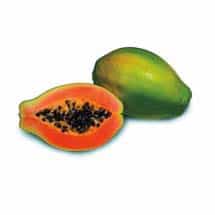What is a carbohydrate? What’s the difference between one that is simple and one that is complex? Shouldn’t I be on a low carbohydrate diet? Carbs are just breads and pasta, right? Oh, there is so much to share and so little time. Think of the word carbo-hydrate. Carbo means containing the element carbon, one of the most abundant elements in the universe, the chemical basis for life. Hydrate means water, which is made up of hydrogen and oxygen, good old H2O. So, carbohydrates are those foods with a chemical makeup that includes carbon, hydrogen and oxygen (CHO).

Carbohydrates include sugars, starches and fibers and are found in most of the food groups – fruits, vegetables, grains, dairy, and beans and legumes. The fact that carbohydrates are in most of the food groups and are our main source of energy is why we need half of our daily calories to come from carbohydrates. Keep in mind that most foods are mixtures of macronutrients.
For example, vegetables are mainly carbohydrates with small amounts of protein and sometimes even a bit of fat (think avocados). Milk and dairy foods are great mixtures of carbohydrates (lactose), proteins (casein and whey) and fats (saturated milk fats). Fruits are pure carbohydrate (fructose and fiber). This brings us to the term simple carbohydrate which means sugar. I was watching The Dr. Oz show one day and he mentioned the term simple carbohydrate. When he said it, I wondered how many people understood what he meant by it.
Simple carbohydrates or sugars are made up of monosaccharides (meaning one or a single sugar) or disaccharides (meaning two or a double sugar).
Monosaccharides:
- Glucose
- a source of energy for cells in the body
- Galactose
- found in milk and yogurt
- Fructose
- found in fruit and honey
Disaccharides:
- Maltose
- a digested starch made up of glucose + glucose
- Lactose
- milk sugar made up of glucose + galactose
- Sucrose
- table sugar made up of glucose + fructose

What is important to know is that there are sources of simple carbohydrates that are more nutritious that will have stars and those that provide calories but not many nutrients (empty calories or energy dense foods and beverages) that will not have stars. This is where using Guiding Stars can provide you with guidance towards identifying the more nutritious food and beverage choices among those foods that contain a high proportion of simple carbohydrates.
Guiding Stars has rated all those foods and stars will be found mainly in the fruit and dairy food groups. Fruits and dairy products such as milk and yogurt that provide vitamins, minerals and fiber and are lower in added sugars, added sodium, saturated fat, trans fat and cholesterol, will have stars. These types of foods are the healthiest sources of simple carbohydrates in your diet.
Then why do we love sweets so much!?! We know that many sweet foods such as candy, sugar sweetened beverages and baked goods provide empty calories. They call to us just the same. This is because our brain loves glucose. Glucose is the preferred energy source of the brain. This is demonstrated by the fact that carbohydrate is the only macronutrient that starts getting digested in the mouth. The other macronutrients (protein and fat) do not start to get digested until they reach the stomach.

Amylase is an enzyme in saliva that digests carbohydrates to turn them into glucose. Try this simple experiment: take a very small piece of a plain cracker, about the size of your fingernail. Place it on the tip of your tongue and let it sit there for a few minutes. After a while, it should begin to taste sweet. That is the starch being digested or broken down into sugar. So, while we crave sugary foods and beverages, we can control this craving by eating nutritious foods at regular meals and snacks throughout the day to “feed the brain.” Next week we’ll explore complex carbs.
About our Nutrition Expert
Lori Kaley MS, RD, LD, MSB is a member of the Guiding Stars Scientific Advisory Panel. Lori has 30 years of combined experience working in healthcare and public health creating policies and environments to help families and children have access to healthy foods and beverages. She is currently Policy Associate at the University of Southern Maine’s Muskie School of Public Service.
Lori’s greatest achievement and joy has been in raising her three daughters to be healthy and productive young adults, each with their own particular love of food, cooking and being physically active. Lori’s passion for nutritional community outreach has been a cornerstone of the Guiding Stars Scientific Advisory Panel. Lori regularly contributes to the Guiding Stars blog.